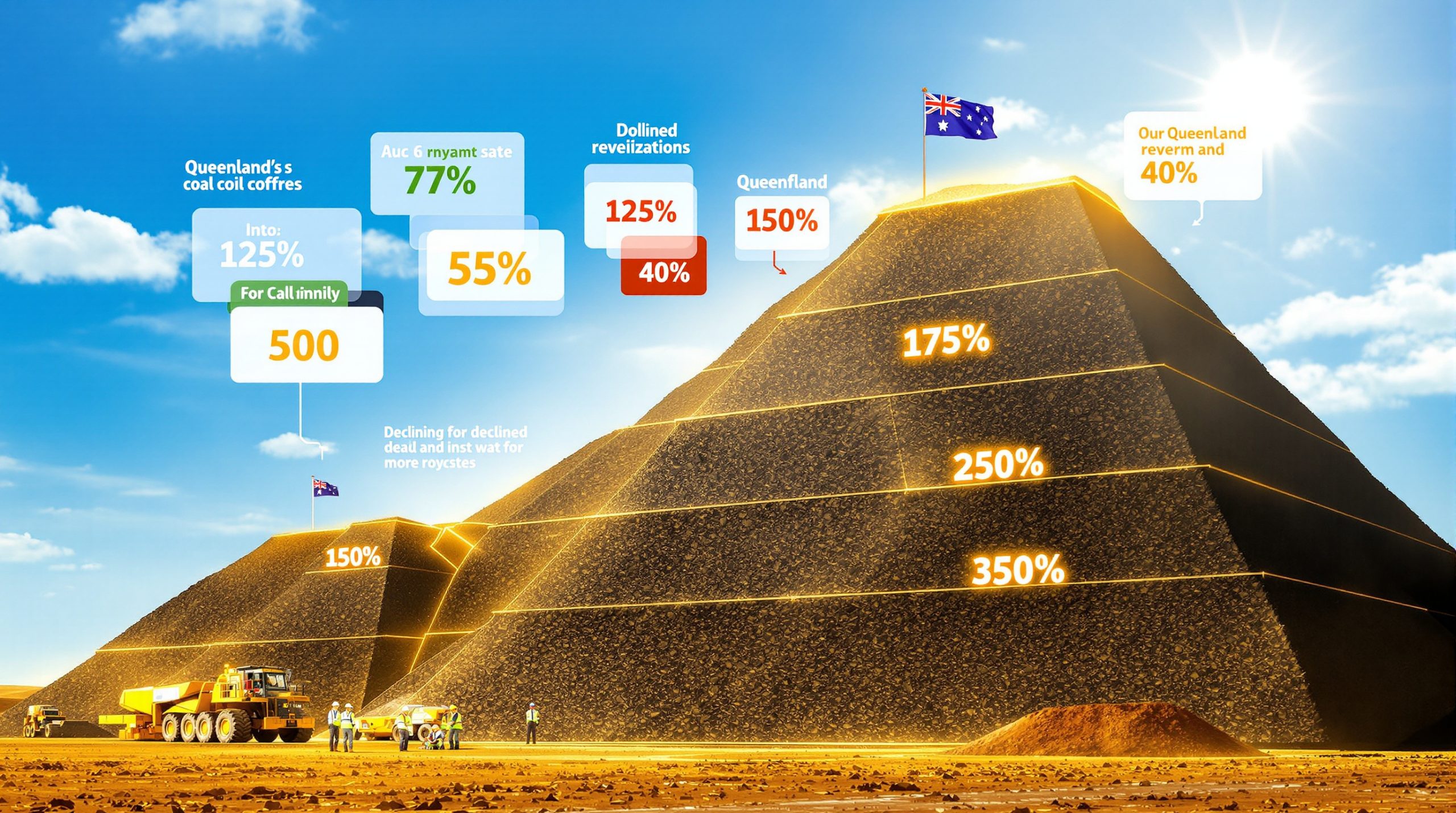How Has the Gold Price Influenced M&A Activity?
The gold sector has moved through a historic phase of mergers and acquisitions, propelled by record high gold prices that have exceeded A$3,500 per ounce. This rally translated into exceptional profit margins and robust balance sheets for major producers—triggering strategic M&A activity across the industry. In the period from June 2024 to June 2025, gold prices surged by 41%, according to Shaw & Partners, with the last A$1,000 per ounce of price movement occurring in just over four months. These dramatic increases turned previously marginal projects into highly profitable operations.
Industry leaders have increasingly opted for pragmatic deal-making rather than waiting for market timing perfection. Executives in the sector emphasize that having the financial firepower now outweighs attempts to outwit commodity cycles. Expanded margins, at times exceeding A$1,700 per ounce, have empowered Australian producers and global mining majors to deploy substantial cash reserves and debt capacity toward transformative transactions.
As producers strengthened cash and bullion reserves—accumulating over A$6 billion, according to Surbiton Associates—attention has shifted to disciplined capital allocation to maintain shareholder value through both peak and downturn cycles. The current gold price environment has set a new precedent for M&A, with operational and financial capacity enabling industry-wide transformation.
What Are the Major Gold Sector Deals of 2024–2025?
The gold sector has witnessed several headline-grabbing transactions over the last 18 months, reshaping the global competitive map.
Table: Significant Gold Sector M&A Deals (2024–2025)
| Acquirer | Target | Deal Value (A$ bn) | Region | Strategic Rationale |
|---|---|---|---|---|
| Northern Star | De Grey Mining | 3.25 | Australia (WA) | Securing tier-1 Hemi deposit, production growth |
| Gold Fields | Gold Road | 2.4 | Australia (WA) | Regional consolidation, scale increase |
| Ramelius Resources | Spartan | 1.55 | Australia (WA) | Strengthening Mt Magnet district presence |
| Westgold | Karora | 0.8 | Australia | Processing integration, regional synergy |
These deals underscore Australia's prominence in the gold sector—accounting for more than a quarter of global mining deal value in 2024–2025. Notably, Northern Star's acquisition of De Grey has positioned it as Australia's largest producer with significant development upside at Hemi. Meanwhile, Gold Fields' acquisition of Gold Road and Ramelius' strategic moves highlight the trend toward regional clusters and operational synergy.
Jason Chang, CEO of EMR Capital, remarked that persistent competition for quality assets has driven premiums higher, reflecting the challenge of securing scarce top-tier resources. As gold sector mergers and acquisitions accounted for nearly 75% of mining deal value in 2024, global players have doubled down on consolidation while contending with an increasingly mature and competitive landscape.
Why Is Scale Becoming Critical in Gold Mining?
The current market cycle has firmly established scale as the single most critical competitive advantage in gold mining. As producers have clustered into larger entities through M&A, market capitalisation gaps have widened substantially.
Key Scale Metrics:
-
Northern Star achieved a market value of approximately A$26 billion, compared to Evolution Mining's A$16 billion, despite both operating in largely overlapping geographies.
-
The sector's largest players collectively amassed cash and bullion reserves exceeding A$6 billion, supporting unprecedented acquisition flexibility.
Benefits of Scale:
-
Cost reduction through procurement leverage and integrated infrastructure.
-
Increased ability to invest in next-generation mining technologies.
-
More reliable access to capital markets at preferential rates.
-
Greater resilience to operational or market disruption.
Sandra Close of Surbiton Associates emphasized the efficiency gained through scale, with the recent cycle revealing substantial advantages for large producers in resource allocation, operational consistency, and capital deployment.
How Are Operational Synergies Driving Value Creation?
Operational synergies are now central to value creation in gold sector mergers and acquisitions. Companies are targeting deals that enable:
-
Optimization of processing plant utilization and expansions.
-
Shared use of mining infrastructure, such as power, logistics, and water.
-
Streamlined overhead and administrative expenses through centralized functions.
-
Enhanced resource management, including mine plan integration and staff deployment.
-
Improved scheduling to maximize equipment and workforce efficiency.
These synergies are especially prevalent in Western Australia, where operational hubs have emerged, integrating multiple properties into single, high-volume production centers. This hub-and-spoke approach delivers cost reductions, eliminates duplication, and allows for more strategic regional planning.
The end result is that acquiring companies can justify higher transaction premiums by capturing near-term and sustainable operational efficiencies post-deal—moving beyond asset aggregation to genuine business transformation.
What Role Does Technology Play in Gold Sector M&A?
Modern gold sector M&A is increasingly shaped by the need for technological prowess. As operations become more complex and grades decline globally, technological integration is a key criterion for acquisition targets.
Categories of Value-Adding Technology:
-
Digital mining and automation, enabling safer, more productive mine sites.
-
Advanced ore body modeling for resource optimization.
-
Real-time processing plant monitoring to maximize recoveries.
-
Predictive maintenance systems that reduce downtime and extend machinery life cycles.
Companies with a robust history of technological implementation gain a post-acquisition edge, leveraging proprietary systems to drive new unlocks in previously underperforming assets. This edge has become an essential consideration in both deal targeting and asset valuation.
How Is Cash Flow Driving Acquisition Strategies?
Exceptional cash generation, driven by strong gold prices and disciplined cost management, has created an environment ripe for continued gold sector mergers and acquisitions. The current cycle has seen Australian producers reporting aggregate cash and bullion reserves over A$6 billion, offering substantial dry powder for deal-making.
Capital Allocation Strategies:
-
Companies are balancing capital returns (dividends, buybacks) with disciplined acquisition spending, mindful of the risks that previously plagued the industry during periods of peak prices.
-
Substantial cash holdings have transformed the competitive landscape, with multiple bidders now pursuing the same assets, increasing deal valuations.
-
Leaders like Evolution Mining's Lawrie Conway stress the importance of maintaining investment discipline: deploying capital when margins are robust, but prioritizing value creation and buffer for potential downturns.
This disciplined cash deployment has kept acquisition activity high, while improving the sector's financial resilience and investor appeal.
What Geographic Patterns Are Emerging in Gold M&A?
Australia stands out as the epicenter for recent gold sector mergers and acquisitions, reflecting both the maturity of the country's gold sector and the strategic focus on consolidation.
Recent Major Deals – Australia (2024–2025):
-
Northern Star–De Grey (A$3.25 billion)
-
Gold Fields–Gold Road (A$2.4 billion)
-
Ramelius–Spartan (A$1.55 billion)
-
Westgold–Karora (A$0.8 billion)
This geographical concentration has created integrated super-operators with broad infrastructure, unified permitting, and enhanced competitive positioning.
Increasing cross-border deals are also evident as global producers look to diversify jurisdictionally, seeking both stable environments and world-class deposits. However, navigating regulatory and cultural complexities remains a critical challenge and a differentiator between successful international acquirers and their peers.
How Has the Buy-versus-Build Debate Evolved?
The high cost and complexity of developing new mines have swung the pendulum in favor of acquisitions. Rising capex, longer permitting timelines, and technical hurdles—particularly in Australia—have made acquiring existing operations or advanced projects a preferred route to production growth.
Supporting Data:
- S&P Global indicated that global gold exploration spending fell by 7% in 2024, following a 15% decline the prior year, despite bullish gold prices. Most notably, junior exploration budgets saw the sharpest decline, reflecting the higher hurdles of new discovery.
Investment Implications:
-
Acquisitions provide immediate cash flow, reduce execution risks, and avoid long, uncertain construction periods.
-
Premiums for development-stage or operating mines increased, as buyers sought certainty over speculative discovery.
Source: S&P Global Market Intelligence (2025), industry interviews.
What Is the Outlook for Future Gold Sector Consolidation?
Looking ahead, gold sector mergers and acquisitions are forecast to maintain their strong momentum into 2025–2026, underpinned by several enduring trends:
-
High levels of sector liquidity: Australian gold producers alone hold over A$6 billion in reserves, supporting ongoing deal activity.
-
Valuation disparities: Wide price-to-earnings and asset value gaps between major and mid-tier producers create clear acquisition opportunities, particularly where operational scale, resource volume, or jurisdictional preference align.
-
Focus on resource replacement: With exploration spend falling, larger companies will increasingly turn to acquisitions for resource renewal.
-
Mid-tier and regional consolidation: Expect continued activity as companies seek to reach critical mass in major gold provinces.
-
Rising importance of specialty metals: Deals will target not only gold but also assets with copper or antimony exposure due to broader strategic value.
Capital markets are supportive of well-structured combinations, especially where acquirers can clearly articulate synergy, growth, and risk mitigation benefits.
Disclaimer: The outlook provided is based on currently available data and prevailing sector trends; investor outcomes may differ depending on future market and regulatory conditions.
How Are Gold Equities Performing Relative to the Metal Price?
A pronounced gap has opened between physical gold and the equity valuations of many gold miners. Despite a 41% rise in gold price from June 2024 to June 2025, equities in the gold sector have lagged. Shaw & Partners note that this valuation gap may close as companies report improved margins and show enhanced capital allocation discipline, historically causing equities to outperform the underlying metal in a robust market.
Performance Highlights:
-
Southern Cross Gold surged 60% year-to-date.
-
Trigg Minerals jumped 145% year-to-date.
-
Kairos Minerals gained 130% in 2025, propelled by ambitious exploration programs and resource growth expectations.
Table: Comparing Gold Price and Selected Mining Equities (2024–2025)
| Asset | YTD Price Change (%) |
|---|---|
| Gold (spot, AUD/oz) | +41 |
| Southern Cross Gold | +60 |
| Trigg Minerals | +145 |
| Kairos Minerals | +130 |
As margin expansion returns and inflation stabilizes, investor sentiment toward equities is improving, setting the stage for a potential catch-up in stock prices.
What Role Do Alternative Metals Play in Gold Company Strategies?
Gold producers now increasingly view alternative metals—especially copper and antimony—as strategic complements to their precious metals business models.
Gold-Copper Synergies:
-
Companies like Evolution Mining report copper making up 25–30% of their annual A$4.35 billion revenue in FY25 alone.
-
Copper provides a natural buffer against gold volatility and taps into underlying growth from global electrification trends.
-
Operators with world-class copper-gold mines (e.g., Northparkes and Ernest Henry) optimize both operational and commercial outcomes.
Antimony: A Critical Edge
-
Antimony prices have rocketed from A$20,000 per tonne in 2022 to around A$93,000 per tonne by August 2025, due largely to China's supply dominance (>83% global refined production).
-
Southern Cross Gold's Sunday Creek project in Victoria has generated an exploration target of 2.2–3.2 million ounces gold equivalent at exceptionally high grades (8.3–10.6 g/t Au Eq).
-
The company's market cap now exceeds A$1.6 billion, with multi-rig drilling and a focus on both gold and strategic antimony insights, enhancing project economics and strategic value.
-
Trigg Minerals is also seeking to capitalize on both antimony and tungsten, positioning itself within the critical minerals landscape for the defense and technology sectors.
This multi-metal strategy reduces single-commodity risk, broadens investor appeal, and leverages surging demand and supply vulnerabilities for critical minerals—particularly in light of evolving geopolitical supply chain challenges.
Conclusion: The Transformed Gold Mining Landscape
The gold sector has fundamentally restructured, with large, well-capitalized, and regionally-concentrated producers now dominating the landscape. Key features include:
-
Enhanced scale: Providing operational stability and innovation investment.
-
Regional consolidation: Maximizing infrastructure and resource value.
-
Technology deployment: Driving performance and cost advantages post-acquisition.
-
Cash-driven strategies: Enabling disciplined, shareholder-focused capital allocation.
-
Strategic diversification: Leveraging copper price prediction trends, antimony, and other critical minerals for resilience and value creation.
As gold sector mergers and acquisitions continue to reshape the industry, the winners will be those who balance scale, synergy, technological edge, and strategic diversification—creating a more resilient, value-focused mining sector.
All statistics and financials as of August 2025 unless otherwise specified. Commodity prices and equity performance are subject to market volatility and may change materially. Investors should consider the inherent risks in mining sector investments and seek professional advice where appropriate.
Want to Capitalise on the Next Major Gold Discovery?
Discover why major mineral discoveries can lead to substantial market returns by exploring Discovery Alert's dedicated discoveries page, where their proprietary Discovery IQ model transforms complex data into actionable investment insights for ASX mineral announcements, helping you position yourself ahead of the market.




